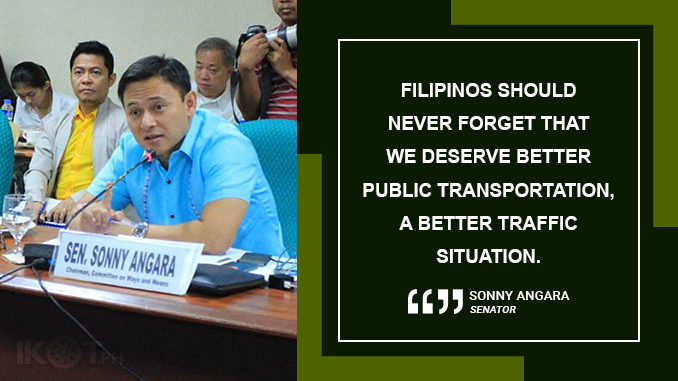Traffic is not just a Metro Manila disease but one which has spread all over the country, Senator Sonny Angara declared in a recent statement, prodding government “to look beyond” the National Capital Region in applying cures to the transportation crisis.
The Japan International Cooperation Agency (JICA) has presented its latest figures on the worsening traffic in Metro Manila, which showed that it now costs P3.5-billion in lost opportunities per day – higher than the estimated P2.4-billion in 2012.
“Kung dati, kapag sinabi mong EDSA, dito tayo nakipaglaban para manumbalik ang demokrasya. Ngayon, ‘pag sinabi mong EDSA, araw-araw mo makikita dito yung mga sasakyang hindi na magkasya. Hanggat walang magandang sistema ng mass transit, dadami at dadami ang sasakyan,” Angara said.
“Filipinos should never forget that we deserve better public transportation, a better traffic situation. It is affecting our well-being. Inaagaw nito ang oras na para sana sa mga anak at pamilya natin,” the veteran legislator added.
The seasoned lawmaker stressed that the effective solutions should be long-term, and that the government is taking steps such as the proposed subway for Metro Manila.
“If public transport is not drastically improved, these missed economic opportunities will also replicate themselves in the big cities in Visayas and Mindanao, like Metro Cebu and Cagayan de Oro, where I just came from. Grabe na ang trapik doon,” the youthful senator said.
Angara has filed resolutions to look into the severe traffic congestion of Metro Cebu, and the state of public transportation in the country so as to ensure an efficient, dependable, safe, affordable and viable mass transport system.
He also authored Senate Bill 1568 or the Sustainable Transportation Act, which seeks to create transportation demand management programs that will reduce the volume of cars in the roads as well as encourage students and workers to use public transport system.
The program shall include carpooling, telecommuting, transport program for government employees, bus rapid transit system, water ferry system, among others.
A developed country is not a place where the poor have cars. It’s where the rich use public transport.
Angara noted that while there’s a steady increase in the number of motor vehicles in the country, the capacity of roads and mass transport systems remain, or worse, are deteriorating.
“The bias in favor of cars as the main means of transport has to be reversed in the coming years and decades. Umookupa ng malaking bahagi ng kalye ang mga pribadong sasakyan na kakaunti lang naman ang sakay kumpara sa mga tren, bus o jeepney,” he said.
“A former mayor of Bogota, Columbia once said that ‘a developed country is not a place where the poor have cars. It’s where the rich use public transport.’ We should aim for this,” he added.

